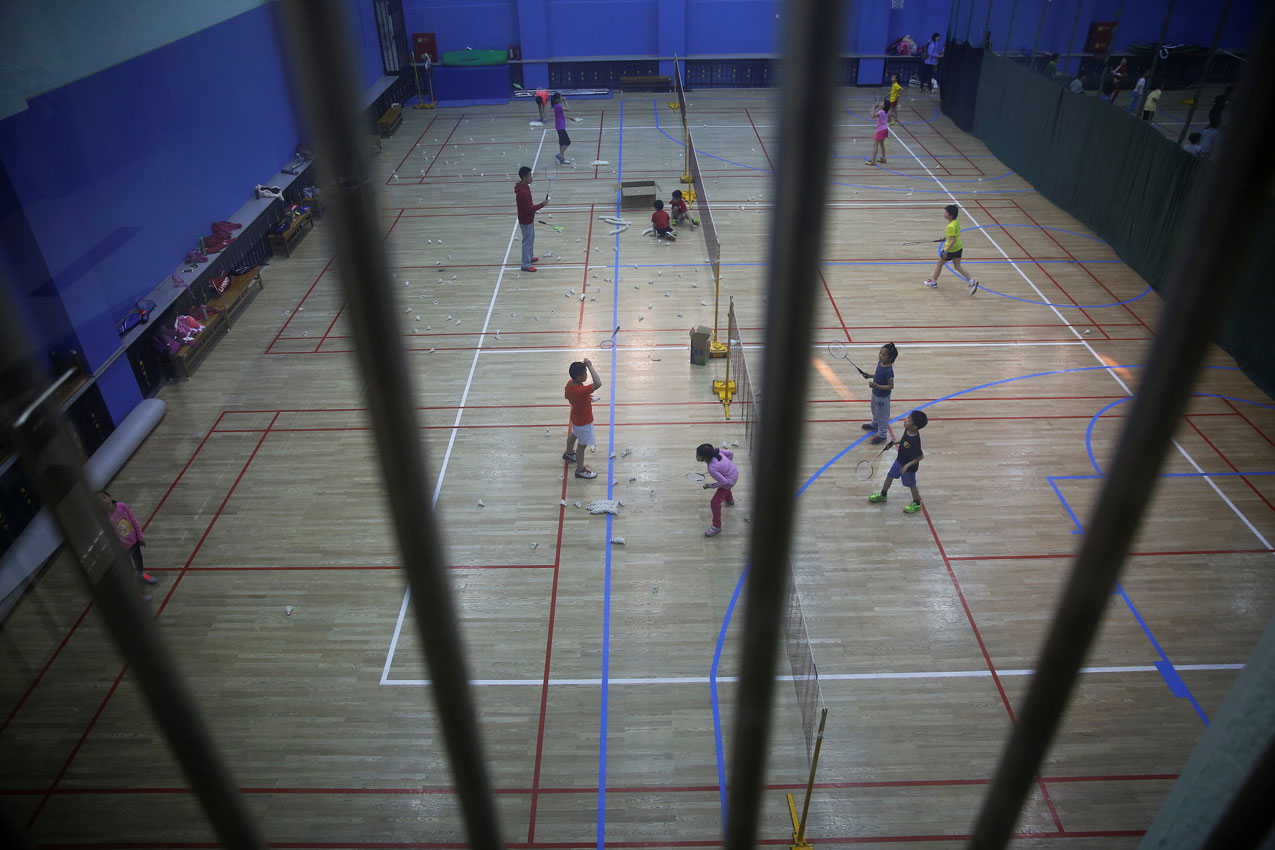Change is unfolding at Shanghai’s No.1 Children’s Sports School Pudong New Area, a small cog in a state-run machine that has churned out Chinese Olympic champions for three and a half decades.
China’s sports system has been enormously successful since the country returned to the Olympic fold in 1980, culminating with the host nation topping the medals’ table at the 2008 Beijing Olympics with only a slight dip into second place behind the United States in London four years later.
And yet, with the Rio de Janeiro Games less than three months away, the system is beginning to break down due to the shifting demographics of a more prosperous nation.
It poses a big challenge to the school’s party committee secretary, Huang Qin, whose institution is one of 2,183 around the country producing 95 per cent of the country’s Olympians.
Fewer parents are willing to let their children endure grueling training routines from as young as six years of age, leading to a fall in student numbers. Some schools have closed and others are adjusting the way they work. The number of sport schools is down from 3,687 in 1990, government numbers show.
“In the 1980s and 1990s, schools like ours were extremely attractive,” Huang said, recalling a time when families were poorer and generous sports subsidies were more highly prized.
The school’s alumni include former Olympians such as hurdler Chen Yanhao and female footballer Xie Huilin.
“(But) parents are less willing now to send their child to sports schools if they perform fairly well in exams…The source of students for sports schools has shrunk as society placed more importance on cultural education.”
EDUCATION STANDARDS
Debates about the continued relevance of the sports school system began to emerge around the 2008 Beijing Olympics, Huang and other schools said, as emerging tales of difficulties facing retired athletes jarred against rising expectations of education standards among China’s booming middle-class.
The country’s declining birth rate as a result of China’s one-child policy has not helped either, along with its cut-throat education system, which sees Chinese students spend twice as much time on homework a day compared to the global average.
Beijing responded to these concerns in 2010 by issuing a new policy, known as document 23, ordering sport schools to improve teaching standards and to give more support to retired athletes.
At the No.1 Children’s Sports School Pudong New Area, Huang said it had improved its teacher training. Three years ago, it also relaxed a 40-year tradition of requiring its entire student cohort to study, train and live full-time on campus.
Now, more than half of the school’s 700 athletes study at other schools. Of its remaining 300 or so full-time students, about 10 per cent live off-campus.
Other schools like the Shanghai Yangpu Youth Amateur Athletic School, are going into kindergartens to advertise gymnastics as an after-school play time activity to parents. “We call it happy gymnastics,” said principal Zhu Zengxiang.
At Beijing’s Shichahai, adorned with posters extolling the feats of ex-students turned Olympic champions, vice-head Zhang Jing said the school offered “comprehensive development” and equipped athletes with the skills needed for life after sport.
The Shanghai Sports School, whose alumni include former Olympic swimming champion Liu Zige, began in 2012 to reject athletes that did not pass its academic entrance exams, and tells parents it wants to use sports training to educate rather than as an end-goal, according to principal Sheng Maowu.
“A lot of sport schools are moving in this direction…but this is a painful process,” he said.
“At present the existing thought is that education and training are two different routes — if you want to be a world champion you cannot study. This belief is wrong…and at the end of the day very few become champions.”
TALENT POOL
The government does not publish student enrolment at its sports schools, but there are signs that the changing landscape has already begun to impact China’s pool of sporting talent.
In April, the China Sports Daily reported that the number of Chinese athletes training to be table tennis players had fallen by almost a quarter since 1987 to 23,266.
“In this changing situation, we must re-examine the traditional training system and model for competitive sports,” Liu Shaonong, head of the table tennis and badminton centre of China’s General Administration of Sport, was quoted as saying.
Reform, however, is proving slow to take root.
In March, a government survey found that some schools inspected across nine cities and provinces did not spend enough money on education, and some local education departments paid little attention to making improvements in line with document 23, according to state media.
But athletes like Wang Linwen, a 25-year-old former professional athlete who represented Shanxi province in wushu, a martial art, said reforms, no matter how little, were crucial for those still willing to enter sports schools.
For five years until she retired in 2009, her weekdays were spent training with only the weekends for studying, she said.
“I lost a lot because I didn’t experience the education system,” she said. “(Reform) is good, that way sports school students won’t come out knowing nothing.”







































